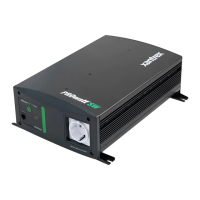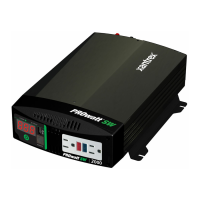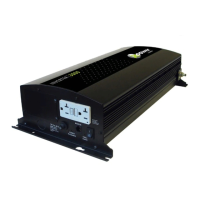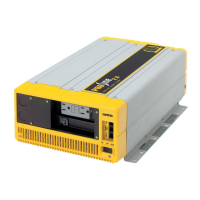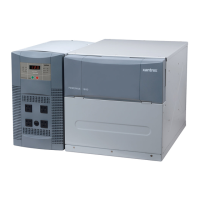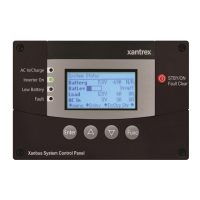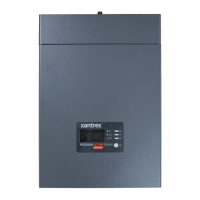Index–3
Index
materials 3–2
overview of steps
3–3
planning
3–4
tools
3–2
inverter
AC receptacle
2–3, 2–5, 3–7
back panel features described
2–7
back panel illustrated
2–7
chassis ground lug
2–7, 3–12
connecting to existing AC circuit
3–6, 3–7
date of purchase
D–3
electrical specifications
A–2
front panel features described
2–4, 2–6
front panel illustrated
2–4, 2–6
hardwiring
2–3
input voltage
4–5
loads
4–6
mounting flanges
2–5
mounting location
3–5, 3–11
mounting orientation
3–11
operating several loads
4–3
output power
3–6
physical specifications
A–2
power output
4–4
problem loads
4–6
proof of purchase
D–2
purchase date
D–4
serial number
D–3, D–4
trouble loads
4–6
turning off
4–2
turning on
4–2
ventilation openings
2–5
wiring compartment
1–2, 2–6
INVERTER ON indicator
2–8
J
jack, to connect remote On/Off switch 2–5
L
loads
chargers
4–6
electronics
4–6
fans
4–6
problem
4–6
reactive
4–4
resistive
4–4
speed controllers
4–6
trouble
4–6
low battery alarm
1–3, 4–5, 5–3
M
materials list for PROwatt 3000 2–2
motors
difficulty starting
4–6
induction
4–6
mounting flanges
2–5
mounting location
3–5
mounting orientation
3–11
N
National Electrical Code requirements 3–12
nickel-cadmium batteries
xii, 4–6
O
On/Off switch (front panel)
illustration and description
2–4
using
4–2
On/Off switch (remote)
description
2–8
illustrated
2–8
installation procedure
3–10
mounting template illustrated
D–5
operating inverter from
4–2
part of materials list
2–2
specifications
A–2
using
4–2
output voltage low
5–3
OVER LOAD indicator
2–4, 4–4, 5–4
OVER TEMP indicator
2–4, 4–4, 5–4
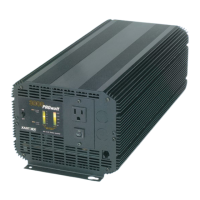
